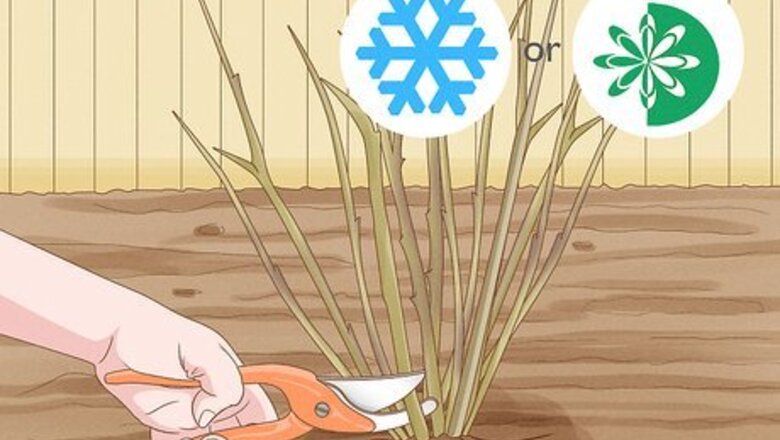
views
Maintaining Climbing Plants
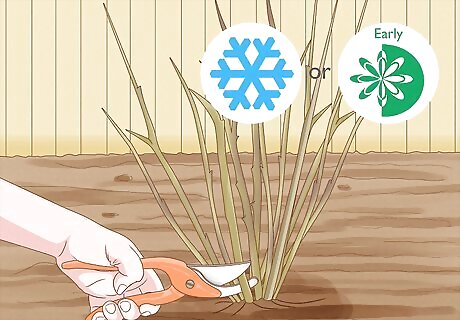
Prune late-blooming vines in the winter or early spring to promote new growth. Late-blooming vines include plants like honeysuckle and trumpet flower that bloom during the late summer and fall. These types of vines should be pruned during the late winter or early spring to give them time to produce new shoots and flowers for the next growing season.
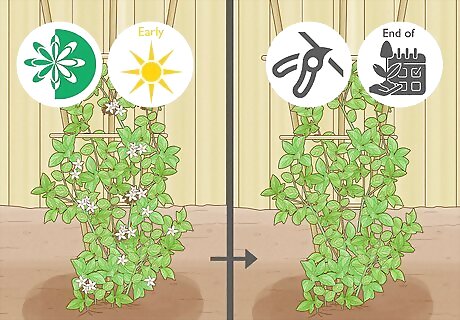
Prune vines that bloom early right after their flowers fade. Prune vines that bloom in the spring and early summer at the end of the growing season to prepare them for the next year's growth. Jasmine, wisteria, and most other hardy vines will fall into this category. Vines that bloom early but produce fruit, such as kiwi and passionfruit, should be pruned in the early spring before flowering to avoid losing your fruit crop.
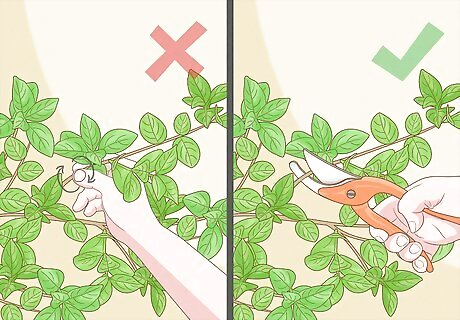
Make clean cuts to avoid damaging the vine. Do not twist, yank, or tear the shoots. Doing so can damage the vine and make it more susceptible to infection and disease. Use garden shears to get a nice, clean cut on all shoots and stems. Cut shoots so that they are flush with the main stem—do not leave a stub. Cut the stem about 1 inch (2.5 cm) above a bud that is pointing in the direction you want the vine to grow. Avoid making cuts that would create inward or crossing buds since this could reduce sunlight and airflow to the center.
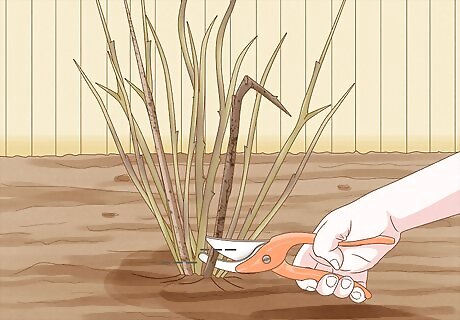
Remove all dead, diseased, and damaged growth promptly. Use garden shears to cut these parts all the way back to the healthy wood. Leaving it on the vine can lead to insect infestation, further spread the infection and disease, and limit the growth of the vine.
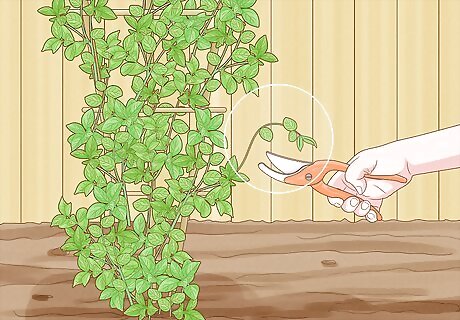
Remove errant stems to help shape your vine. Snip all stems that are growing out of the direction you'd like the vine to grow. Pay special attention to stems that are growing away from the support.
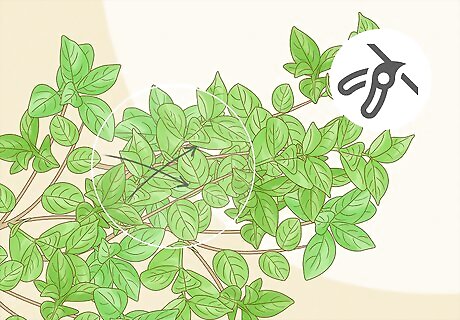
Remove tangled stems to promote healthy growth. Tangled mats of vine restrict the flow of light and air and can inhibit the growth of your vine. If it is left too long, the vines can also begin to smother other plants and become entangled in other structures. If it's hard to tell where to cut or what to remove, it's okay to make random snips on the vine. Wait until the stems die and then remove them.
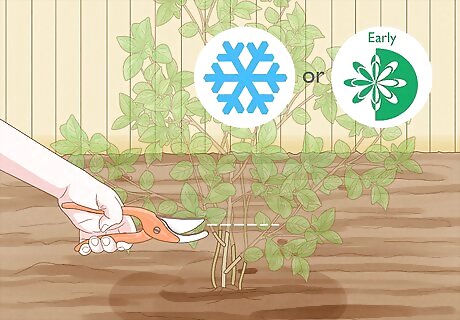
Trim unruly vines down to the ground to start over the following year. If you are having an extremely difficult time sorting through your vine, it may be best to start over and begin retraining it during the next season. Trim the vine down to the ground level in the late winter or early spring to encourage healthy, manageable regrowth.
Training and Pruning Grapevines
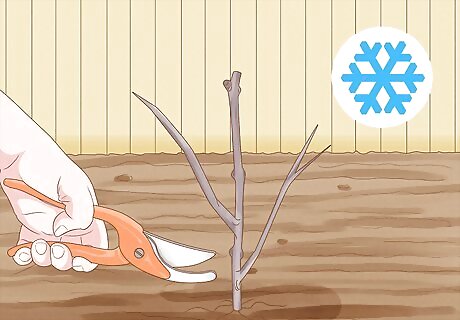
Prune grapevines during the winter to reduce the risk of infection. Infection from wound damage caused by pruning is less likely to occur while the vine is dormant because the vine has more time to recover before the next growing season. Pruning while the vine is dormant also makes it easier to see without all of the leaves in the way. To further reduce the risk of infection, sterilize the pruning shears after working on each vine by dipping them in isopropyl alcohol.
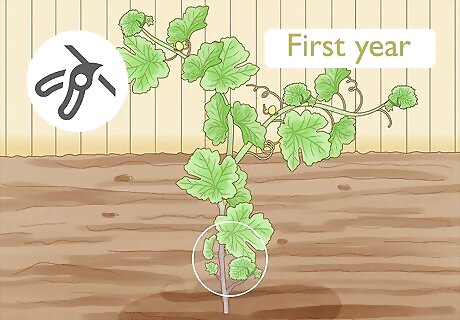
Remove all but 1 shoot from the main trunk during the first year. Select the most vigorous shoot to save, and cut all of the other shoots back so they are flush with the main trunk. Cut the shoot you selected to save down to only 1 or 2 buds. Remove all other shoots that begin to grow throughout the season.
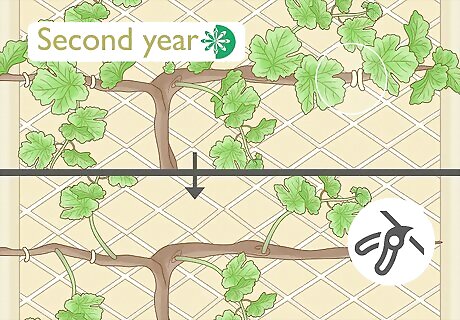
Select 2 shoots to save in the spring of the second year. Select the most vigorous shoot from each side of the trunk—they will become your canes. Tie them loosely to the trellis using green garden tape. Apply the tape just tight enough to support the branch. Applying the tape too tightly may restrict its growth. Cut all other shoots so that they are flush with the main trunk.
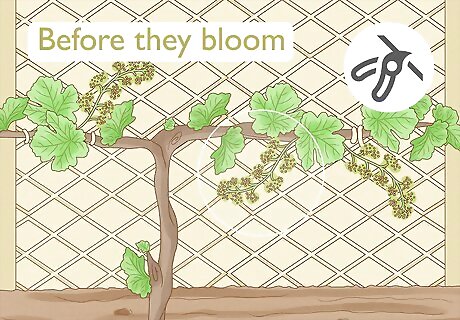
Cut off all flower clusters throughout the season of the second year. Since your grape vine won't produce fruit yet, it's important to remove the flower clusters to direct the energy to your 2 saved shoots. Remove the clusters as soon as you notice them, preferably before they bloom.
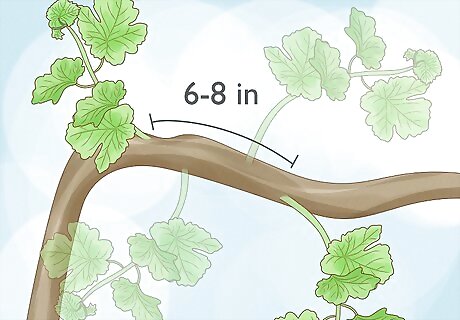
Thin the shoots growing from the cane each winter. There should only be 1 shoot every 6–8 inches (15–20 cm), or approximately 7-10 buds, on each cane. Remove all other shoots from the cane, and roots that are growing out of the main trunk or from the root system in the ground.
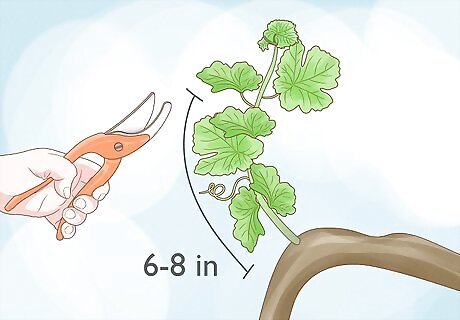
Trim the remaining shoots to 6–8 inches (15–20 cm) long. Use garden shears to cut the shoots at a 45° angle at least 1 inch (2.5 cm) above a bud. These trimmed shoots are what will produce fruit in subsequent years.
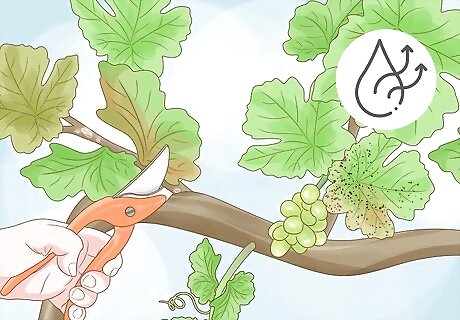
Remove diseased wood promptly. Look for lesions, sap, mold, discolored leaves, and fruit that doesn't ripen. Use garden shears to cleanly cut off these sections during dry weather. If you must make a large cut during wet weather, leave a stub 3–4 inches (7.6–10.2 cm) long that can be pruned when it's dry.














Comments
0 comment